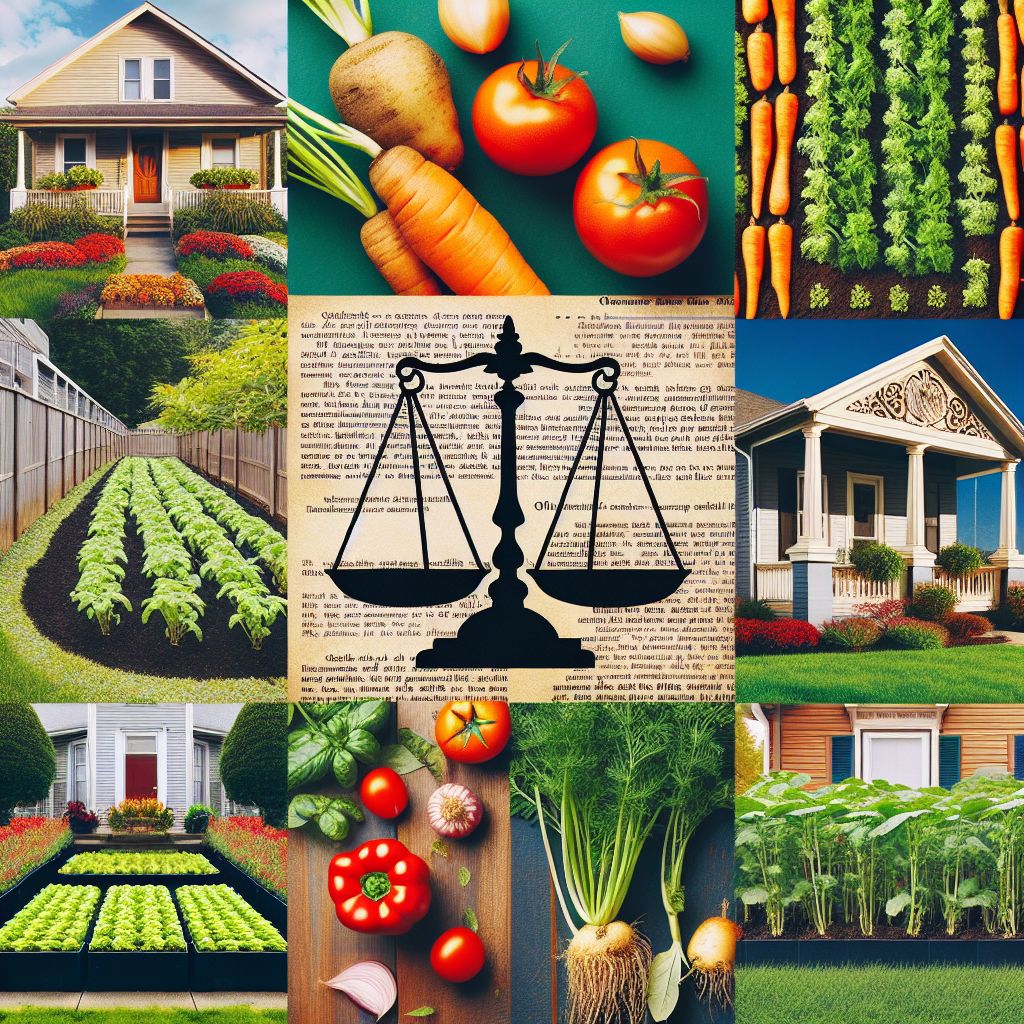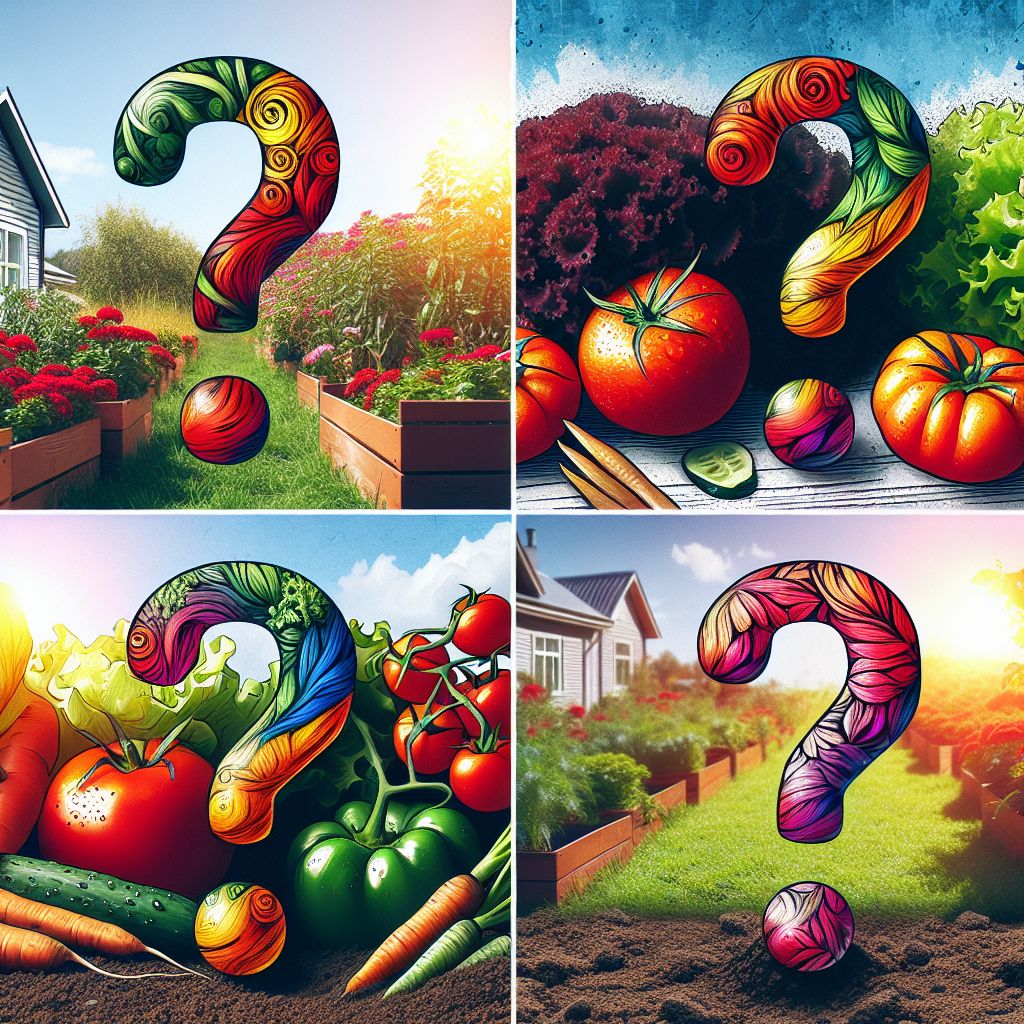
Key Takeaways:
- In Ohio, front yard vegetable gardens are generally legal, but local laws can vary.
- Before planting, it’s crucial to review your city’s zoning ordinances and any HOA rules.
- Vegetables like tomatoes, peppers, and leafy greens do well in Ohio’s climate.
- Creating a garden can be cost-effective, with many plants costing just a few dollars each.
- Regular maintenance, including watering and weeding, is essential for a thriving garden.
Ohio’s Stance on Front Yard Farming: What You Should Know
Gardening is a rewarding hobby that can yield delicious results, especially when it comes to growing your own food. But before you start tilling the soil in your front yard, it’s important to understand the legal landscape. Most importantly, while Ohio doesn’t have a state-wide ban on front yard vegetable gardens, the rules can differ from one locality to another.
Understanding Your Rights: Growing Food at Home
If you’re thinking about turning your front yard into a vegetable haven, the first thing to do is check your local zoning laws. These laws dictate what you can and cannot do on your property. In Ohio, many municipalities encourage sustainable practices like gardening, but there might be specific guidelines you need to follow. For example, some cities may have restrictions on the height of plants or require a certain distance from the sidewalk.
Zoning Laws and Regulations in Ohio
Local laws are the name of the game when it comes to what you can plant and where you can plant it. In some cases, there may be restrictions on the types of structures you can have in your garden, such as raised beds or trellises. Besides that, homeowner associations (HOAs) might have their own set of rules. Therefore, it’s a good idea to review your HOA agreement or reach out to your city’s planning department to avoid any surprises down the line.
Example Garden Regs in Ohio
References:
https://www.ohiomagazine.com/home-garden/article/backyard-garden-guide
https://www.reddit.com/r/cincinnati/comments/vipjla/are_vegetable_gardens_allowed/
https://www.earthisland.org/journal/index.php/articles/entry/local_laws_ban_front_yard_food_gardens/
https://reason.com/2017/05/13/local-officials-are-coming-for-your-gard/
https://sustainableamerica.org/blog/believe-it-or-not-it-may-be-illegal-to-grow-your-own-food/
Getting Your Garden Started: Step by Step
Once you’ve got the green light from your local authorities, it’s time to get your hands dirty. But before you dive in, let’s map out the steps to ensure your garden is a success from the get-go.
Choosing the Right Spot for Your Garden
Your front yard might seem like one big plot of potential, but choosing the right spot for your garden can make all the difference. You’ll want to look for a spot that gets plenty of sunlight—most vegetables need at least six hours of direct sun per day. Also, consider the slope of your yard; you want a spot that has good drainage and won’t leave your plants’ roots waterlogged.
Selecting Vegetables That Thrive in Ohio’s Climate
Ohio’s seasons are a mix of warm summers and cold winters, which means that timing is crucial when planting your garden. Start with cool-season crops like lettuce, spinach, and peas, which can be planted in early spring. As the weather warms up, you can transition to warm-season crops like tomatoes, cucumbers, and peppers. Remember, some vegetables can be planted multiple times throughout the growing season for a continuous harvest!
Maximizing Your Yield: Expert Gardening Tips
To get the most out of your front yard garden, there are a few key strategies to employ. First, choose high-yield vegetables that don’t require a lot of space, such as pole beans or cherry tomatoes. Vertical gardening techniques can also help you grow more in a limited area. Companion planting is another great way to enhance your garden’s productivity – some plants, when grown together, can improve each other’s growth and deter pests.
Another tip is to keep your soil healthy. A rich, organic compost will nourish your plants and promote vigorous growth. Also, be mindful of crop rotation; don’t plant the same vegetable in the same spot year after year as this can lead to soil depletion and increased disease risk.
Soil Preparation for Optimal Growth
Good soil is the foundation of a successful garden. In Ohio, you’ll find a range of soil types, from clay to sandy loam. No matter what type you have, it’s important to prepare your soil before planting. Start by breaking up the soil to a depth of about 12 inches and mix in compost or aged manure to add nutrients. If you’re dealing with heavy clay, consider raised beds or adding organic matter to improve drainage.
Testing your soil’s pH can also be a game-changer. Most vegetables prefer a pH between 6.0 and 7.0. If your soil is too acidic or too alkaline, it can be adjusted with lime or sulfur to create the ideal growing environment for your plants.
Watering Practices for Healthy Vegetables
Consistent watering is key to a thriving vegetable garden, especially during the hot Ohio summers. The goal is to keep the soil evenly moist but not waterlogged. Early morning is the best time to water, as it allows the leaves to dry out over the course of the day, reducing the risk of fungal diseases. A drip irrigation system or soaker hoses can be a wise investment, delivering water directly to the roots and minimizing waste.
Navigating Local Ordinances: Keeping Your Garden Compliant
Even after you’ve checked the legality of your front yard garden, it’s important to stay up-to-date on local ordinances, as these can change. Keep an eye on community bulletins or attend local council meetings to stay informed. If you’re part of a homeowners’ association, regular communication can help you understand any changes that might affect your garden.
Staying Informed About Community Guidelines
Knowledge is power when it comes to community guidelines. Many cities have resources available for residents who want to grow their own food. Reach out to your local extension office or visit the city’s website for information on workshops, planting guides, and any updates to gardening ordinances.
Resolving Disputes With Neighbors the Right Way
While most neighbors will admire your lush garden, some may have concerns. If a dispute arises, approach it with a neighborly and understanding attitude. Listen to their concerns and see if there’s a compromise to be had. Sometimes, simply explaining the benefits of your garden or offering to share some of the harvest can go a long way. If you’re unable to resolve the issue amicably, it may be necessary to revisit local ordinances or seek mediation.

FAQ
Can Homeowners Associations (HOAs) Ban Front Yard Gardens in Ohio?
Yes, HOAs can set their own rules regarding front yard gardens. If you live in a community governed by an HOA, it’s important to review the association’s covenants, conditions, and restrictions (CC&Rs). These documents often outline what is permissible in terms of landscaping and gardening. In some cases, HOAs may restrict the type of plants you can grow or even prohibit vegetable gardens in the front yard altogether. Before you start planting, make sure you’re in compliance to avoid any potential fines or disputes.
If you find that your HOA’s regulations are restrictive, you might consider speaking with your neighbors and the HOA board about the benefits of front yard gardens. Together, you may be able to advocate for changes that allow for more gardening freedom while still maintaining the aesthetic of the community.
What Are the Restrictions on Selling Home-Grown Produce?
In Ohio, selling produce from your home garden is generally allowed, but there are regulations to consider. For instance, if you plan to sell on a larger scale, you may need to comply with local health department regulations, which could include obtaining a vendor’s license or passing a health inspection. For small-scale or occasional sales, such as a stand at the end of your driveway, the rules are often less stringent. Understanding the legal guidelines for homegrown food can help ensure that you stay within the law while enjoying the fruits of your labor.
It’s also wise to check with your city or county about any specific ordinances that may apply. Some localities may have restrictions on the size and location of your sales setup. Always ensure you’re following the rules to avoid any legal issues.
Are There Any Permits Required for Front Yard Gardening?
Typically, you don’t need a permit to start a front yard garden for personal use in Ohio. However, if your garden includes permanent structures like a greenhouse or large raised beds, you may need to obtain a building permit from your local government. Additionally, if you’re part of an HOA, you may need approval from the association before making significant changes to your landscape. For more information on front yard gardening rules, you can refer to this guide on front yard vegetable garden legality, rules, and guidelines.
Before you begin constructing any garden structures, check with your city’s building department for any size restrictions or setback requirements. Complying with these rules from the start can save you time, money, and headaches down the road.
How Can You Protect Your Garden From Wildlife?
Wildlife can be a challenge for gardeners, but with a few preventative measures, you can protect your hard work. Here are some strategies:
- Install fencing around your garden to deter larger animals like deer and rabbits.
- Use netting or row covers to keep birds and insects away from your plants.
- Plant aromatic herbs like
or mint around the perimeter of your garden, as these can repel certain pests. - Consider motion-activated sprinklers or lights to startle and scare off unwanted visitors.
Remember that the key to deterring wildlife is to make your garden less attractive to them. This means keeping it tidy, removing any fallen fruit or vegetables promptly, and securing compost bins and trash cans.
While dealing with wildlife can be frustrating, it’s also part of the gardening experience. Be patient and willing to try different methods to find what works best for your garden.
Can You Grow Medicinal Plants in Your Front Yard?
When it comes to growing medicinal plants, the same general rules apply as with vegetable gardening. However, you should be aware that some plants may be subject to additional regulations, especially if they’re considered controlled substances. Always research the specific plants you’re interested in to ensure you’re not inadvertently breaking any laws.
For non-controlled medicinal plants, like echinacea or chamomile, you should treat them as you would any other garden plant. Make sure they’re properly labeled and consider their specific growing requirements, such as soil type and sun exposure.
As with vegetables, it’s a good idea to check with your local government and HOA, if applicable, to confirm that there are no restrictions on growing medicinal plants in your front yard. In some cases, there may be concerns about plants that are toxic if ingested, so proper labeling and placement are crucial for safety.




Leave a Reply